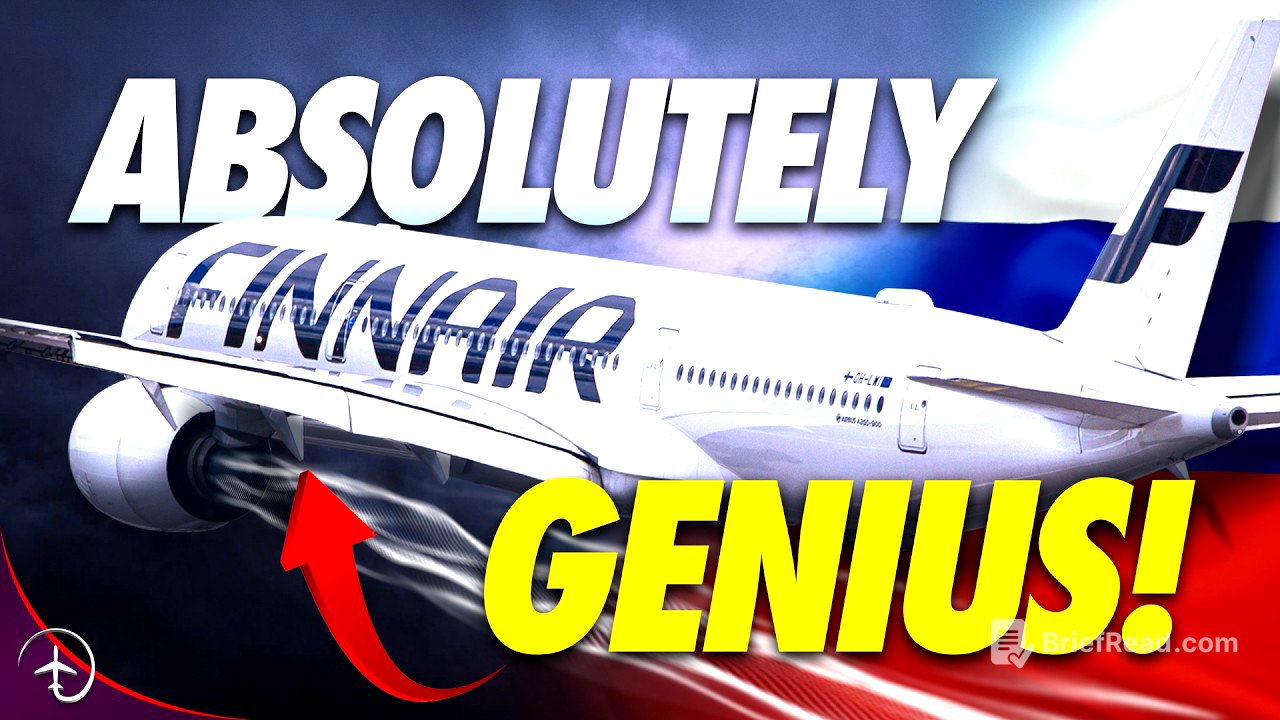TLDR;
This video explores the surprising success of Finnair, Finland's flag carrier, despite the challenges posed by the war in Ukraine and the closure of Russian airspace. The video highlights Finnair's strategic shift towards long-haul travel, their reliance on the Airbus A350, and their creative use of wet-leasing agreements to maintain profitability. The video also discusses the impact of the war on the aviation industry, particularly for airlines that rely on Russian airspace, and the potential implications of a future peace agreement.
- Finnair's success despite the war in Ukraine and the closure of Russian airspace.
- Finnair's strategic shift towards long-haul travel and their reliance on the Airbus A350.
- The impact of the war on the aviation industry and the potential implications of a future peace agreement.
Finnair's Strategic Shift [0:43]
The video begins by explaining that Finnair, like many airlines, has experienced ups and downs in the aviation industry. Finnair's strategic shift towards long-haul travel, particularly to East Asia, was a key decision that nearly backfired due to the war in Ukraine. The video highlights Finnair's reliance on the Airbus A350, a fuel-efficient and long-range aircraft, which proved crucial in navigating the challenges of avoiding Russian airspace.
The Impact of the War on Finnair [5:33]
The video then delves into the impact of the war on Finnair's operations. The closure of Russian airspace forced Finnair to take longer, less efficient routes, requiring additional crew and fuel. The video explains how Finnair adapted by carefully selecting routes, utilizing the range of their Airbus A350s, and creatively using wet-leasing agreements to deploy their Airbus A330s to other destinations.
Finnair's Wet-Leasing Strategies [12:51]
The video highlights Finnair's innovative use of wet-leasing agreements, where they provided aircraft and crews to other airlines. This allowed them to utilize their Airbus A330s on routes not directly affected by the sanctions, such as flights to the United States and Australia. The video also explains the concept of mixed-fleet flying, where pilots can be cross-trained to fly different aircraft types, enabling Finnair to efficiently deploy their crews on wet-leased flights.
The Future of Finnair and the Aviation Industry [19:08]
The video concludes by discussing the potential implications of a future peace agreement between Russia and Ukraine. The video explores the challenges and opportunities that this event could present for airlines, particularly those that have relied on Russian airspace. The video suggests that Finnair's success despite the war is a positive sign for the future of international long-haul travel, but acknowledges that the industry will continue to face challenges, such as cost pressures and potential labor disputes.
